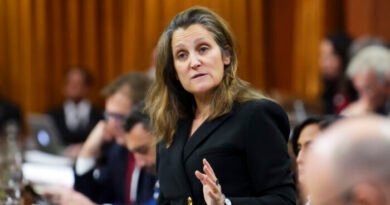Canadian Innovation Minister Supports Australia’s Nuclear Expansion Bid
Canada’s centre-left Liberal innovation minister says the country is ready to sell nuclear technology to Australia as part of the centre-right opposition’s plan
Canada’s innovation minister has thrown his support behind the centre-right Liberal-National Coalition’s nuclear policy and suggested his country could give Australia a hand in building power plants.
The comment came amidst heated debate between the Labor government and opposition over the prospect of including nuclear power in Australia’s energy mix, as the country seeks to reach net zero emissions by 2050.
On June 22, François-Philippe Champagne of the centre-left Liberal Party said Canada was ready to sell nuclear technology to Australia as a cost-effective energy source.
“The world is looking at three things—it’s really around food security, energy security and supply chain resiliency,” he told Sky News Australia.
“And so, for us, talking to our Australian friend is the key because I think if you look at the challenge of the 21st century, I think energy generation is going to be at the heart of that.”
Nuclear’s Impact on Electricity Prices
Like other advanced economies such as France and Germany, Canada has decades of experience and expertise in nuclear power.
Nuclear power produces about 15 percent of Canada’s electricity and accounts for 60 percent of electricity produced in the southern and most populous province of Ontario.
Ontario, which houses three nuclear power stations, has the cheapest electricity prices in Canada.
On average, South Australia and New South Wales have the most expensive electricity prices in the country, at $0.45 (US$0.30) and $0.34 (US$0.23) per Kilowatt-hour, respectively.
Currently, Australia is one of three G20 countries that do not have nuclear power. The other two are Saudi Arabia and Italy.
Labor Government’s Strong Response to Dutton Plan
In a surprising move, Opposition Leader Peter Dutton on June 19 announced the Liberal-Nationals Coalition’s plan to build seven nuclear reactors across Australia if it wins the next federal election.
The Coalition aims to repurpose retiring coal-fired power stations for nuclear facilities.

As he unveiled the plan, Mr. Dutton criticised the Labor government’s renewable-only policy, saying it was not fit for purpose.
“No other country in the world can keep the lights on 24/7 with the renewables-only policy,” he said.
“We need to ensure hospitals can stay on 24/7, we need to ensure that cold rooms can stay on 24/7, we need to make sure that our economy could function 24/7 and we can only do that with a strong baseload power.
“We want to utilise existing assets that we have got, and the poles and wires that are used at the moment on the coal-fired power station sites can be utilised to distribute the energy generated from the latest generation nuclear reactors.”
“I think radiation has always been one of those topics which polarises people. We have not done a very good job, and I say ‘we’ including myself, in explaining radiation risk,” Mr. Hooker told The Epoch Times.
Mr. Albanese noted that his government had approved 50 major renewable energy projects around the country.
Labor has set an ambitious target of reaching 80 percent of renewable electricity generation by 2030.
Meanwhile, Foreign Minister Penny Wong stated that the plan was “a risky and expensive gamble that won’t work.”






